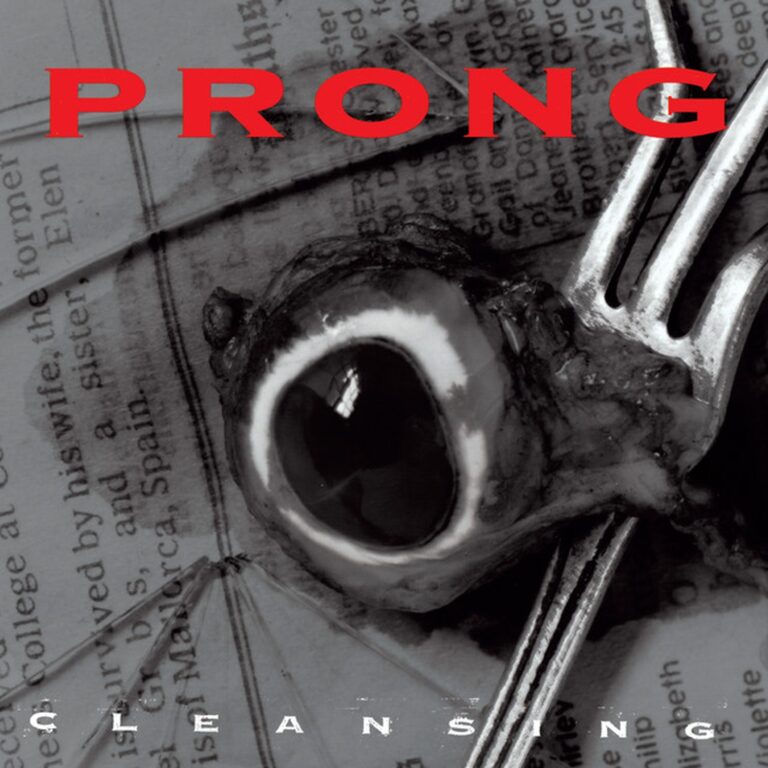
Why Doolittle Matters
When Doolittle landed in April 1989, it didn’t just arrive — it detonated. The Pixies had already carved their name into the underground with Surfer Rosa, but Doolittle was something sharper and stranger. It was the sound of noise and pop finding common ground, of chaos being shaped into song. It was weird, funny, violent, and irresistibly catchy. It changed how guitars would sound for the next decade — and how pop could sound dangerous again.
Our podcast episode about this album is here:
The Big Picture
Doolittle sits at a crossroads where alternative rock learned how to balance melody and menace. It took the raw, scrappy power of Surfer Rosa and refined it into something both catchy and confrontational. You could hum along — but you might also feel slightly unnerved while doing it.
- Quiet verses that suddenly erupt into walls of noise
- Hooks hidden inside distortion
- Lyrics that swing between biblical horror and surreal cinema
- A rhythm section that plays with surgical precision but never loses its pulse
- A production style that made rawness sound almost architectural
Producer Gil Norton helped the Boston quartet walk a tightrope between chaos and clarity. He pushed them toward melody and structure without sanding off the edges. The result was a record that connected college radio to the mainstream — and built the blueprint Nirvana, Radiohead, and countless others would follow. For many listeners, Doolittle was their first taste of how unsettlingly beautiful loud guitars could be.
Recording the Chaos
The band entered the studio with confidence but also friction. Black Francis had a batch of songs that blended surrealist humor with apocalyptic dread; Kim Deal brought her melodic sensibility and sharp instincts for harmony. Joey Santiago was a sonic sculptor with his guitar, while David Lovering’s drumming kept the whole machine grounded. Norton, who had produced the single “Gigantic,” saw potential for something much bigger — and much tighter.
| Studio | Dates | Location | Notes |
|---|---|---|---|
| Downtown Recorders | Oct 31, 1988 | Boston, MA | Early tracking and demos |
| Carriage House Studios | Nov–Dec 1988 | Stamford, CT | Main recording sessions; residential setup kept them working long days and late nights |
| Mixing | Dec 1988 | — | Steve Haigler and Gil Norton final mixes |
| Release | Apr 17 (UK) / Apr 18 (US), 1989 | — | 4AD / Elektra |
Budget: Around $40,000, four times Surfer Rosa — still modest by major-label standards, but enough to let Norton chase perfection without losing momentum.
Personnel:
- Black Francis (Charles Thompson): vocals, rhythm guitar, manic preacher-in-chief
- Kim Deal: bass, harmonies, occasional slide guitar, the calm at the center of the storm
- Joey Santiago: lead guitar, a master of jagged melody and negative space
- David Lovering: drums and lead vocal on “La La Love You”
- Gil Norton: producer and self-confessed “Pixies drill sergeant”
What Norton Changed
Before recording, Norton spent two solid weeks dissecting demos and rehearsing structures. He treated Pixies songs like tiny pop puzzles — everything had to fit, every accent had to matter. The sessions were intense but surprisingly focused. Norton’s influence reshaped the sound that would soon dominate 1990s rock radio.
- Slowed down tempos for better swing and punch (“There Goes My Gun”)
- Added codas to stretch the tension (“Debaser”)
- Layered guitars with compression instead of open-room ambience
- Encouraged vocal doubling and precise structure
- Introduced subtle reverb and dynamics control that kept the chaos crisp
Some band members pushed back — Santiago famously covered his Marshall cabs with blankets to protest the reverb. But Norton’s precision gave Doolittle its razor-sharp feel. The record may sound spontaneous, but every drop, crash, and scream lands exactly where it should. It’s chaos, carefully choreographed.
The Sound of Tension and Release
Doolittle isn’t just “quiet-loud.” It’s about control and explosion — the calm before the storm, and the thrill when it finally breaks. Few albums have used silence and space so effectively. Every time the band drop to a whisper, you can feel the next detonation coming.
| Element | Description |
|---|---|
| Vocals | Francis flips from sardonic whispers to primal screams; Deal’s harmonies bring light to the noise. |
| Guitars | Santiago’s leads are jagged and surf-inspired, slashing through the mix with melodic intent. |
| Bass | Deal’s basslines hum like an engine — melodic, mid-forward, and essential to the band’s swing. |
| Drums | Lovering’s playing is tight, dry, and human — a metronome with heart, anchoring the chaos. |
Listen for:
- The pause before the first chorus in “Tame.” It’s like a held breath before an explosion.
- The clipped toms and biting snare on “Gouge Away.”
- The stacked harmonies that make “Here Comes Your Man” pure sunshine amid the gloom.
- The eerie cello swells that elevate “Monkey Gone to Heaven.”
Songs That Define the Record
| Track | Mood / Theme | Notable Features |
|---|---|---|
| Debaser | Surrealist film & chaos | Inspired by Un Chien Andalou; ends in ecstatic loops and joyful anarchy |
| Tame | Animal instinct | Whisper-scream dynamic; primal drumming; pure tension and release |
| Wave of Mutilation | Beauty in destruction | Melancholy surf-pop; the “UK Surf” version later reveals its ghostly side |
| Monkey Gone to Heaven | Environmental parable | Strings, numerology, and apocalypse disguised as a lullaby |
| Here Comes Your Man | Accidental pop perfection | A jangle-pop classic written years earlier and reluctantly released |
| Gouge Away | Samson & Delilah retold | Grinding verses, a sky-high chorus, and Deal’s cool voice balancing Francis’s fury |
Themes and Imagery
Black Francis wrote like someone who had read the Bible, watched a stack of surrealist films, and then dreamed about the apocalypse. His lyrics blur religion, absurdity, and violence into something almost cinematic. Every song is a miniature world — a fable, a joke, or a nightmare you can dance to.
- Surrealism: “Debaser” reimagines Buñuel and Dalí’s Un Chien Andalou as a punk sermon.
- Biblical imagery: “Dead” and “Gouge Away” pull Old Testament morality into modern decay.
- Environmental collapse: “Monkey Gone to Heaven” transforms climate anxiety into myth.
- Humour and parody: “La La Love You” channels a 1950s crooner and turns lust into a joke about baseball bases.
- Psychological portraiture: “Crackity Jones” captures manic paranoia in 84 seconds flat.
Deal’s voice is the emotional counterweight — sweet but unflinching. She turns Francis’s wild-eyed declarations into something almost graceful. Her harmonies are the reason the chaos feels human.
Chart & Legacy Snapshot
| Metric | Data |
|---|---|
| UK Albums Chart | #8 (11 weeks) |
| US Billboard 200 | #98 (27 weeks) |
| US RIAA | Gold (1995), Platinum (2018) |
| UK BPI | Platinum |
| Singles | “Monkey Gone to Heaven,” “Here Comes Your Man” |
| Labels | 4AD (world), Elektra (US) |
Critical reaction (1989):
- Melody Maker and Sounds both crowned it Album of the Year
- NME gave it 10/10
- Rolling Stone and Village Voice placed it in their year-end top ten
Modern praise:
- Pitchfork: #4 best album of the 1980s
- Rolling Stone: #141 on the all-time 500 list
- NME: #2 of the 1980s, #8 all-time
- Mojo and Q continue to rank it as a defining alt-rock record
Why It Still Resonates
Kurt Cobain once said “Smells Like Teen Spirit” was him trying to write a Pixies song. That’s how deep Doolittle’s fingerprints go. The quiet-loud blueprint became the DNA of an era, from Seattle to Sheffield. But the album’s true power isn’t in the influence — it’s in how alive it still feels today.
- Nirvana, Radiohead, PJ Harvey, and Weezer all carried its DNA forward
- Producers chased its balance of raw energy and hi-fi precision for decades
- Every indie band that ever whispered before screaming owes it a debt
- Its surreal humor and emotional honesty still feel ahead of their time
More than three decades later, Doolittle still sounds fresh, feral, and full of life. It’s precise yet primal, melodic yet monstrous — a record that smiles as it bares its teeth. The Pixies made tension sound joyful, and they taught rock how to be strange again.



